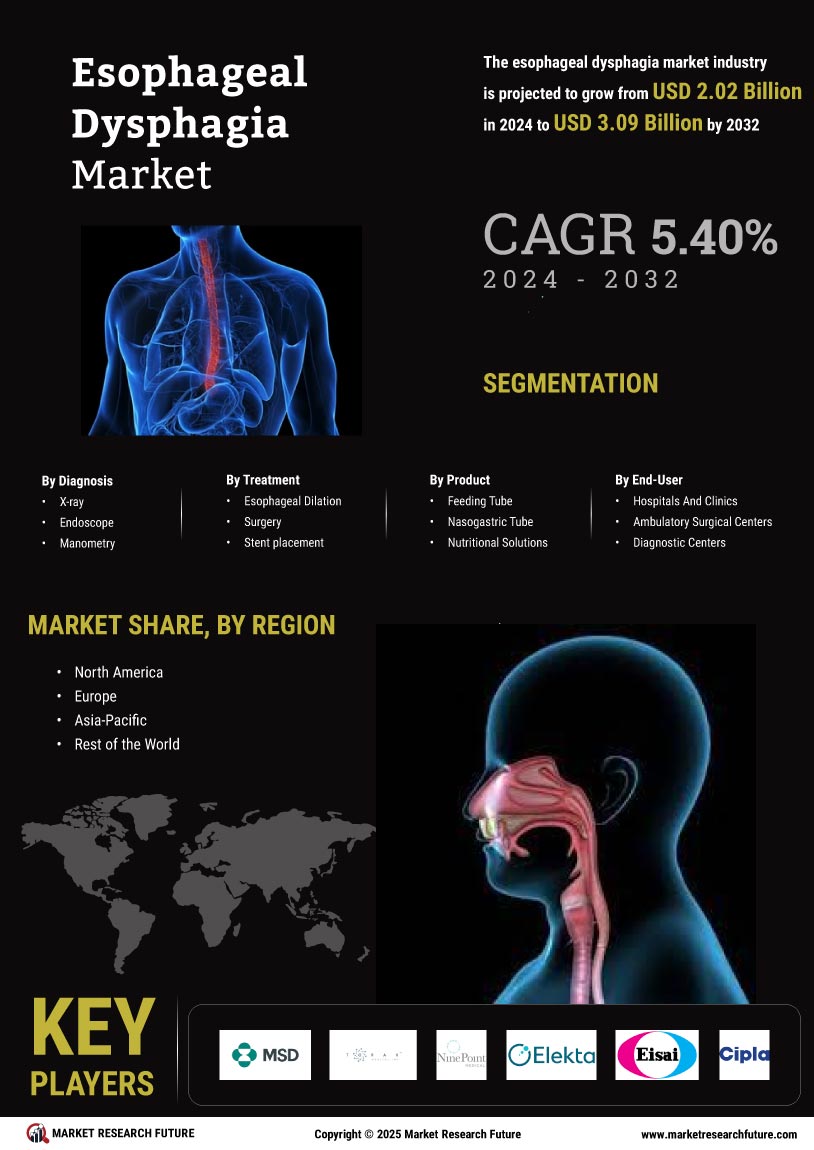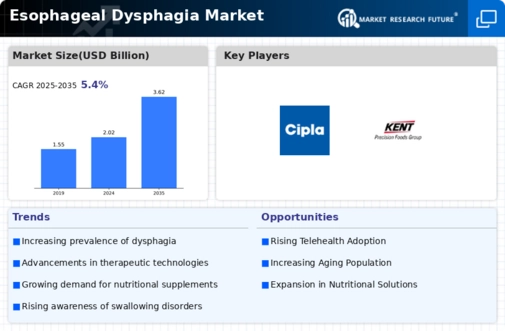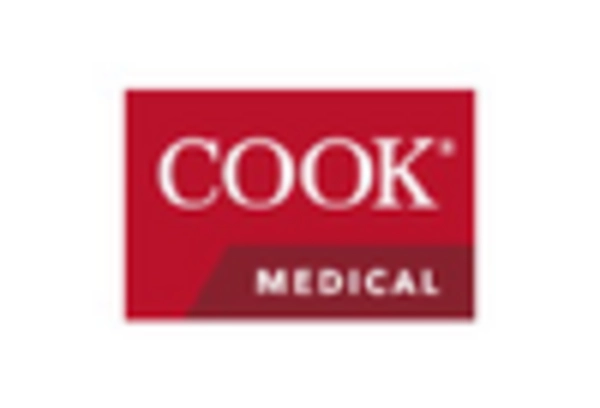Rising Awareness and Diagnosis
There is a growing awareness regarding esophageal dysphagia among healthcare professionals and patients alike. This heightened awareness is leading to improved diagnostic practices, which are crucial for timely intervention. As more individuals recognize the symptoms of dysphagia, the demand for diagnostic services is likely to increase. Recent studies suggest that early diagnosis can significantly improve treatment outcomes, thereby influencing the Esophageal Dysphagia Market positively. Additionally, healthcare providers are increasingly adopting advanced diagnostic tools, such as high-resolution manometry and video fluoroscopy, to enhance the accuracy of diagnoses. This trend not only facilitates better patient management but also contributes to the overall growth of the Esophageal Dysphagia Market, as more patients seek effective solutions for their swallowing difficulties.
Advancements in Treatment Modalities
The Esophageal Dysphagia Market is witnessing a surge in innovative treatment modalities, which could significantly enhance patient outcomes. Recent advancements in minimally invasive surgical techniques, such as endoscopic interventions, have shown promise in treating dysphagia. These procedures not only reduce recovery times but also minimize complications associated with traditional surgeries. Furthermore, the introduction of novel pharmacological agents aimed at improving esophageal motility is gaining traction. Market data indicates that the global market for dysphagia management products is projected to grow at a compound annual growth rate of over 7% in the coming years. This growth is indicative of the increasing recognition of dysphagia as a critical health issue, thereby driving investments in research and development within the Esophageal Dysphagia Market.
Technological Integration in Healthcare
The integration of technology in healthcare is transforming the landscape of the Esophageal Dysphagia Market. Telehealth services, for instance, are becoming increasingly popular, allowing patients to receive consultations and follow-up care remotely. This shift not only enhances accessibility but also encourages more individuals to seek help for their swallowing difficulties. Additionally, the use of artificial intelligence and machine learning in diagnostic processes is gaining traction, potentially improving the accuracy and efficiency of dysphagia assessments. Market analysts predict that the adoption of these technologies could lead to a more streamlined approach to managing esophageal dysphagia, ultimately benefiting both patients and healthcare providers. As technology continues to evolve, the Esophageal Dysphagia Market is likely to experience significant growth driven by these advancements.
Aging Population and Esophageal Dysphagia
The increasing prevalence of esophageal dysphagia is closely linked to the aging population. As individuals age, the risk of developing conditions that contribute to dysphagia, such as neurological disorders and esophageal cancer, escalates. According to recent statistics, approximately 15-30% of older adults experience some form of swallowing difficulty. This demographic shift is likely to drive the Esophageal Dysphagia Market, as healthcare systems adapt to meet the needs of this growing patient population. The demand for effective diagnostic tools and treatment options is expected to rise, prompting innovation and investment in the sector. Consequently, stakeholders in the Esophageal Dysphagia Market may find opportunities in developing targeted therapies and advanced diagnostic technologies tailored to older adults.
Increased Focus on Nutritional Management
Nutritional management is becoming a focal point in the treatment of esophageal dysphagia, as it plays a critical role in patient recovery and quality of life. The Esophageal Dysphagia Market is responding to this need by developing specialized nutritional products designed for individuals with swallowing difficulties. These products, which include thickened liquids and pureed foods, are essential for ensuring adequate nutrition while minimizing the risk of aspiration. Market Research Future indicates that the demand for dysphagia-specific nutritional products is on the rise, with a projected growth rate of approximately 6% annually. This trend underscores the importance of integrating nutritional strategies into the overall management of dysphagia, thereby driving innovation and expansion within the Esophageal Dysphagia Market.


















Leave a Comment